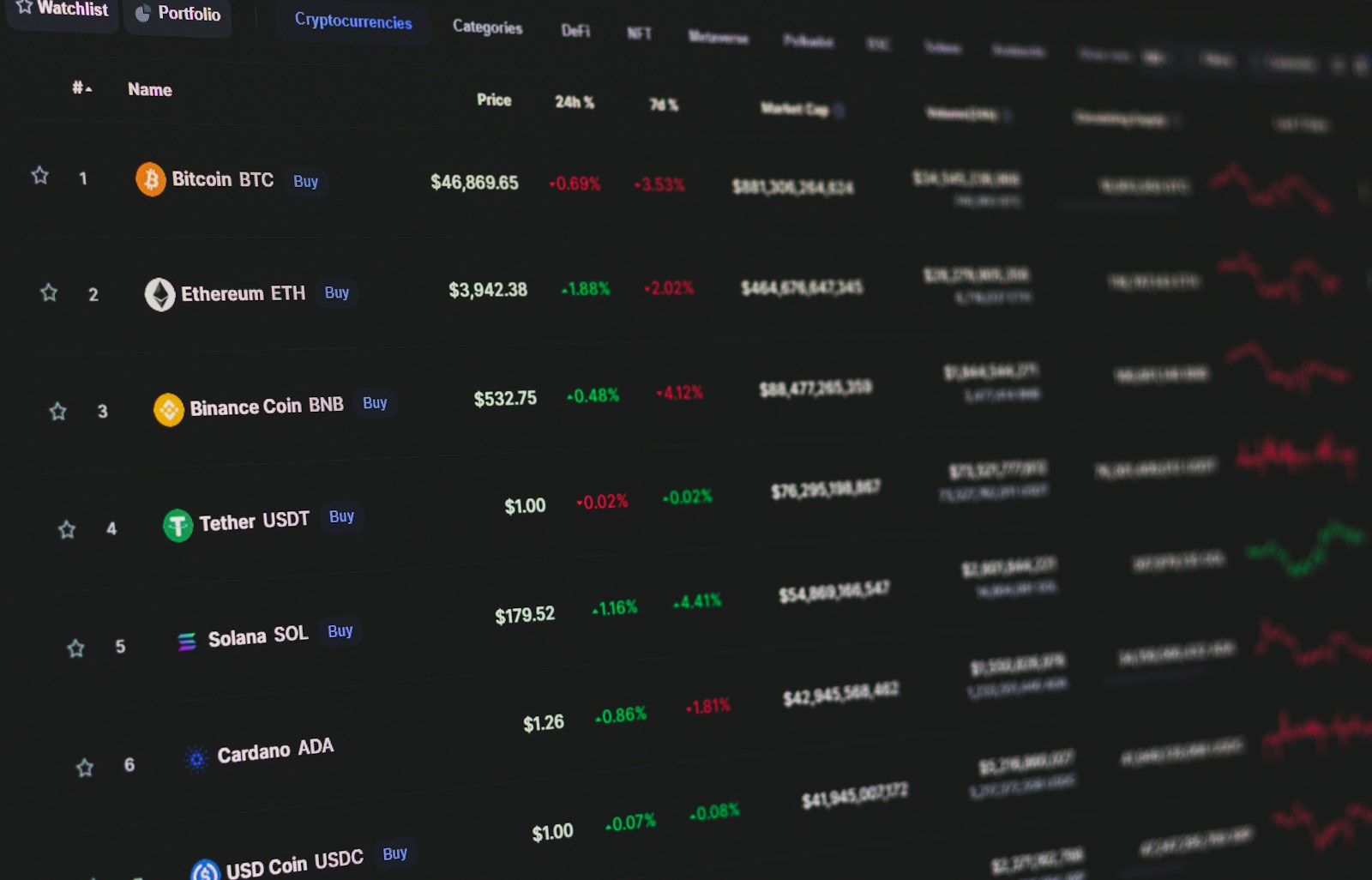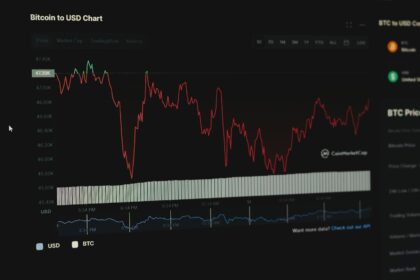Begin by selecting a reputable platform that supports various tokens and has robust security measures. Registration typically requires providing an email address and creating a strong password, ensuring immediate protection of the profile.
Identity confirmation is mandatory before any transactions; prepare to submit government-issued identification along with proof of residence. This verification process can take from a few minutes to several days depending on the platform’s policies.
Once verified, configuring two-factor authentication adds an extra layer of security. Navigating through the dashboard will reveal options to deposit funds, explore trading pairs, and customize notification preferences–key steps for a smooth introduction to digital currency markets.
Setting up a New Crypto Trading Profile on an Online Platform
To begin trading cryptocurrencies, selecting a reliable online platform is critical. The initial step involves creating a user profile that will serve as the gateway for all transactions and portfolio management. Registration procedures typically require submitting personal information and verifying identity to comply with regulatory standards such as KYC (Know Your Customer) and AML (Anti-Money Laundering). This verification process can take from a few minutes to several days depending on the platform’s operational protocols.
After registration, securing the profile becomes paramount. Enabling two-factor authentication (2FA) is strongly recommended to add an extra layer of protection beyond password security. Many platforms support authentication apps like Google Authenticator or hardware tokens, which significantly reduce the risk of unauthorized access.
Essential Steps in Opening a Crypto Trading Profile
The procedure starts by choosing a platform that matches specific needs such as supported currencies, fee structures, liquidity, and user interface simplicity. Once the site is selected, follow these steps:
- Create login credentials: Use a unique email address and generate a strong password combining letters, numbers, and symbols.
- Complete identity verification: Upload government-issued identification documents along with proof of residence when required by the platform’s compliance rules.
- Set up payment methods: Link bank accounts or credit cards for fiat deposits or withdrawals if allowed.
- Configure security settings: Activate two-factor authentication and review withdrawal whitelist options to restrict asset transfers.
This systematic approach ensures smooth onboarding while maintaining legal compliance and safeguarding digital assets effectively.
An example case study involves Binance’s onboarding flow where users must first register with basic details before undergoing tiered verification levels. Tier 1 permits limited trading volumes without ID checks; higher tiers unlock increased limits but require detailed personal documentation. This model balances accessibility with regulatory adherence efficiently.
The choice of platform also influences available features post-registration: some offer advanced charting tools suitable for technical analysis; others focus on ease-of-use for beginners. Understanding this distinction helps align expectations with platform capabilities and improves overall user experience during market participation.
Choosing a Trusted Crypto Trading Platform
The initial step when registering on a digital asset marketplace involves selecting a reliable platform that ensures security and compliance. Prioritize marketplaces with transparent verification procedures and robust user authentication methods, as these features significantly reduce risks related to fraud and unauthorized access.
Before opening a profile, investigate the platform’s regulatory status within its operating jurisdictions. Verified platforms typically comply with Know Your Customer (KYC) and Anti-Money Laundering (AML) standards, which are crucial for legal operation and safeguarding user funds during transactions.
Key Factors in Selecting an Exchange Platform
Security protocols must be at the forefront of any evaluation. Look for platforms employing multi-factor authentication (MFA), cold storage solutions for digital assets, and regular third-party audits. For example, Coinbase uses hardware security modules (HSM) to protect private keys offline, minimizing hacking vulnerabilities.
Transaction fees and liquidity levels directly affect trading efficiency. Platforms like Binance offer extensive trading pairs with high daily volume, reducing slippage risks during asset swaps. Conversely, smaller platforms might have lower fees but limited liquidity, leading to slower order execution.
- User Interface: Intuitive design accelerates navigation through deposit, withdrawal, and trade functions.
- Verification Speed: Some services complete identity confirmation within minutes using automated systems; others require days due to manual checks.
- Customer Support: Responsive help desks can resolve issues related to wallet synchronization or transaction delays effectively.
The registration workflow should include clear steps for identity confirmation without excessive data requests that may deter users or expose sensitive information unnecessarily. Some platforms integrate biometric verification or video identification to streamline this process while maintaining compliance rigorously.
An effective marketplace balances accessibility with stringent security measures. By carefully comparing platform features such as verification mechanisms, fee structures, support quality, and liquidity conditions before initiating trades or deposits, users can confidently engage in digital asset operations aligned with their risk tolerance and transactional goals.
Creating and verifying your profile
To begin the registration process on a trading platform, users must input accurate personal details such as full name, email address, and phone number. This data forms the foundation for identification and communication within the system. Once submitted, a confirmation link or code is typically sent to verify contact information, which helps prevent fraudulent registrations and ensures secure access to the interface.
After initial registration, identity verification becomes mandatory to comply with regulatory standards like KYC (Know Your Customer) protocols. This procedure requires uploading official documents such as passports or driver’s licenses along with proof of residence. The platform then cross-checks these inputs against global sanction lists and internal databases to confirm authenticity, reducing risks of money laundering or illicit activities.
Verification workflow and technical specifics
The validation process usually involves automated software combined with manual reviews by compliance teams. Optical character recognition (OCR) technology extracts data from uploaded images, while biometric checks may include facial recognition or liveness detection to confirm user presence during submission. For example, Binance employs multi-layered verification techniques that accelerate approval times without compromising security.
Users should anticipate that verification time varies depending on document quality and platform workload; some services complete this in minutes whereas others may take several days. Maintaining clear scans and updating information proactively can expedite acceptance. Additionally, enabling two-factor authentication after profile confirmation further enhances protection against unauthorized access throughout all interactions with the marketplace.
Securing Credentials During Platform Registration
When beginning the process of opening a new profile on any trading platform, prioritizing strong, unique passwords significantly reduces vulnerability to unauthorized access. Avoid simple phrases or common patterns; instead, opt for combinations of uppercase and lowercase letters, numbers, and special characters that exceed 12 symbols in length. Password managers can assist in generating and securely storing complex keys, minimizing the risk associated with reuse across multiple services.
Multi-factor authentication (MFA) remains one of the most reliable safeguards after initial registration is complete. Activating MFA–whether through authenticator apps like Google Authenticator or hardware tokens such as YubiKey–adds an additional layer beyond just a password. This method protects profiles even if login credentials are compromised via phishing attacks or data breaches on third-party sites.
Verification Processes and Identity Protection
Most platforms mandate identity verification steps soon after creating a user profile to comply with regulatory standards. During this phase, sensitive personal information is submitted and stored securely using encryption protocols compliant with GDPR or similar frameworks. Users should confirm the platform’s adherence to these standards by reviewing privacy policies and security certificates before proceeding.
In addition to encrypted storage, reputable services employ anomaly detection systems that monitor unusual login attempts from unfamiliar devices or geolocations. These systems often trigger alerts or temporary account freezes, prompting users to verify their identities anew. This proactive approach helps prevent account takeovers during early operational stages when users might still be familiarizing themselves with interface nuances.
- Use device whitelisting options where available to limit access only from recognized hardware.
- Avoid public Wi-Fi networks during sensitive activities such as submitting verification documents or entering passwords.
- Regularly update recovery information including phone numbers and secondary emails to facilitate secure credential resets.
Phishing scams targeting newly registered individuals remain prevalent; they frequently imitate official communications requesting immediate action on “suspicious” activity related to login credentials. Always verify sender authenticity by cross-checking email domains and contacting support through official channels rather than clicking embedded links in unsolicited messages.
Depositing Funds Safely on a Trading Platform
To ensure secure fund transfers, it is vital to complete all necessary verification steps before initiating any deposit. Many platforms require users to register and verify their identity through KYC (Know Your Customer) protocols. This process not only safeguards the user’s assets but also aligns with regulatory compliance, reducing risks of fraud or unauthorized transactions.
Once verification is confirmed, linking a reliable payment method–such as a bank account or trusted digital wallet–is crucial. Avoid using third-party services that are not officially supported by the platform, as these can introduce vulnerabilities or delays in transaction processing. Always double-check the platform’s recommended deposit channels and limits to prevent errors during funding.
Practical Steps for Secure Deposits
When preparing to transfer funds onto a trading system, start by examining the currency options accepted. For example, some interfaces accept stablecoins like USDT or fiat currencies via wire transfer, while others may exclusively support cryptocurrency deposits. Selecting the appropriate method affects speed and security–wire transfers generally have higher security but slower clearance times compared to crypto deposits.
After choosing the deposit type, carefully copy wallet addresses if sending tokens directly. Even minor mistakes in address entry can lead to irreversible loss of funds. Utilizing QR codes provided by the platform helps mitigate this risk. Additionally, enabling two-factor authentication (2FA) adds an extra layer of protection during both login and transaction approvals.
A technical case study from 2021 revealed that users who bypassed verification or used unsupported wallets experienced delayed or failed deposits in over 15% of cases on leading platforms. Conversely, those adhering strictly to platform guidelines reported near-instant confirmations and minimal issues. This underlines the importance of following established procedures precisely when funding an account.
Executing Your Initial Transaction on a Trading Platform
Initiating a trade immediately after registration requires precise understanding of order types and transaction fees inherent to the platform. Selecting between market, limit, or stop orders can significantly influence execution speed and price slippage. For instance, opting for a limit order on a volatile asset might delay fulfillment but ensures price control, whereas market orders execute instantly with potential cost fluctuations.
Verifying wallet integration and confirming sufficient balances in the linked portfolio is critical before committing to any exchange operation. Many platforms now support multi-layer security protocols such as two-factor authentication (2FA) and hardware wallet compatibility, which mitigate risks associated with unauthorized access during transactional procedures.
Broader Implications and Future Prospects
- Protocol Evolution: Decentralized finance (DeFi) mechanisms are increasingly influencing centralized trading hubs by introducing automated liquidity pools and algorithmic pricing models that could redefine traditional order books.
- Regulatory Alignment: Compliance frameworks adapting to cross-border transactions will enhance transparency while affecting user onboarding timelines and verification complexity.
- Integration of AI Analytics: Emerging analytical tools leveraging machine learning promise to optimize trade timing by predicting short-term price movements based on historical data patterns.
The interaction between user interfaces and underlying blockchain technology will continue refining the ease with which newcomers initiate trades, reducing friction without sacrificing security. Observing developments such as layer-2 scalability solutions and interoperable chain protocols offers insights into how transactional efficiency might improve drastically, making entry-level transactions more cost-effective and instantaneous across multiple networks.





